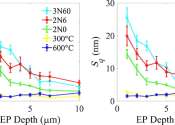Smoother surfaces make for better accelerators
With every new particle accelerator built for research, scientists have an opportunity to push the limits of discovery. But this is only true if new particle accelerators deliver the desired performance—no small feat in ...









